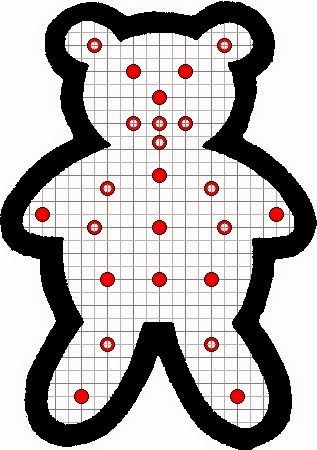Like the PCB etching, my design for the foundry is based on several different sources on the Internet including several Instructables. It will be a gas fired furnace (Propane) and I will be making it out of, what else, an old Propane tank.
I've had this tank for a while and have been specifically saving it for use for a project like this. I'm not sure where it came from. The person I bought my house from left it behind with an old grill. It's been empty since I've had it but, to be extra sure, I connected the tank to the grill and tried to burn off any remaining fuel. I then opened the valve and left it upside down (since Propane is heavier than air) for over a week.
I tried to remove the valve before beginning but, even with the biggest cheater bar, all I did was bend up the top handle of the tank and round off the edges of the valve. It didn't occur to me to use heat to loosen the locking compound they use on the threads. Again, I still wasn't feeling 100%. I figure I'll just deal with the valve later since I'm cutting that part out anyway.
Even though I was reasonably certain that the tank was empty, I didn't want to just jump in with the angle grinder and cutoff disk. As part of my design for the furnace (and borrowed from several others on the Internet), I will be using sheet metal screws through the side to give the refractory cement something to grip along the walls. I figured it'd be easier to drill the pilot holes for the screws while the tank was intact if for nothing else than to keep from ovalizing the tank while drilling. This, if done carefully, would also allow me one final test to ensure the tank was empty before letting sparks fly.
I marked out the drilling locations evenly as well as the cut line for the top. Using a center punch, I marked my first drill location. With some cutting fluid and a sharp drill bit, I very slowly started to drill through the tank. Again, I was confident the tank was empty but it was still a little unnerving to be drilling into a Propane tank. I went slowly to lessen the risk of creating a spark. When it finally pierced the tank, there was no sudden rush of gas and, more importantly, no kaboom. I then proceeded to drill the remaining pilot holes. Once complete, I set the tank out in the middle of the driveway for a bit to let any residual gas dissipate before cutting.
Well I couldn't put it off any longer, it was time to cut.
<EDIT/UPDATE!!!> I now know I should have removed the valve and filled the tank with water to properly and safely displace any gas before cutting. Lesson learned and fortunately I didn't blow myself up doing this. I will re-iterate, this blog is not a how-to guide, it's a "how I did it" guide. I will most certainly do some stupid things on here and, if you are stupid enough to follow without checking for yourself, that's on you. </UPDATE>
 Using an angle grinder with a cutoff disk, I slowly worked my way around the line marked. I found the easiest way was to lay the tank on its side (cradled with some scrap 2x4s to prevent rolling) and make small cuts. I'd cut a couple of inches, then rotate the tank, cut, rotate, cut, rotate... to allow me to ensure the cut was a straight as possible. The unevenness isn't near as bad as it seems in the picture and will easily clean up with a file. The most important thing (to me) was that it wasn't lopsided or overly wavy.
Using an angle grinder with a cutoff disk, I slowly worked my way around the line marked. I found the easiest way was to lay the tank on its side (cradled with some scrap 2x4s to prevent rolling) and make small cuts. I'd cut a couple of inches, then rotate the tank, cut, rotate, cut, rotate... to allow me to ensure the cut was a straight as possible. The unevenness isn't near as bad as it seems in the picture and will easily clean up with a file. The most important thing (to me) was that it wasn't lopsided or overly wavy. As this is a standard propane tank, the diameter is 12 inches. Since I plan to have the cement walls 2 inches, I need to find a good cylindrical form, close to 8 inches in diameter, to use for the inner part of the concrete mold. I'll be keeping my eye out for something to use or, worst case, I'll bend something out of sheet metal.
That's about it for today. I intended to bend up the round bar I'll be using for legs as well as making additional cuts to the top which will ultimately become the lid, but I'm starting to feel pretty puny. Time to go back inside and resume my spot on the couch.















